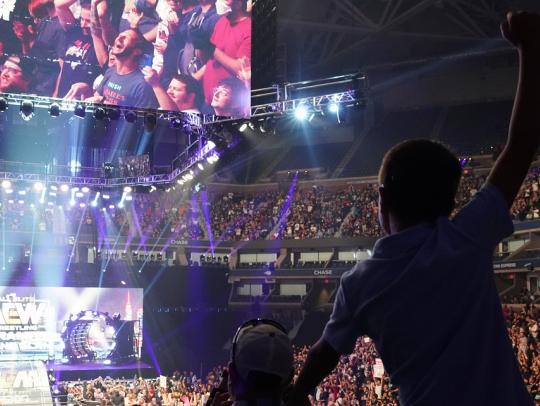Clint Brown Vice President, Sales and Market Development for SES Video in Africa discusses the role of distribution networks on the bottom line
Getting video content to viewers can be a minefield of possibilities. Whether a company is a content developer, rights holder, broadcaster, live events producer, OTT provider, or Mobile operator, the path they choose will define their revenue and potential for growth.
Distribution. Many see it as the headache in between getting noticed by customers and making money, but if the correct calls are made a business model can thrive, even in the age of Freemium.
Traditional linear TV is broken down into three models, Pay TV, Free-to-Air (FTA), and Free-to-View (FTV). Then on top of this, there are so many new models developing. The most prominent is subscription Over-the-Top (OTT) services like Netflix, but Video On-Demand (VOD) services come in many forms. Less well known still is transactional OTT, where a viewer can pay for only what they watch over an OTT platform.
Choosing between all of these options it isn’t getting any easier. These models are developing to respond to consumer demand and everyone needs to consider their strategy. Incumbents like broadcasters with a distribution system in place already might need to look at doing things in a different way. Yet it is also crucial for new entrants from content developers to OTT providers to find that perfect approach. More and more companies are offering Over-the-Top (OTT) services for Video On-Demand (VOD), giving audiences all the power, but what makes the most sense is a complex question, complicated by technical infrastructure.
Traditional TV models, whether Pay TV, FTA, or FTV, can maximise infrastructure and deliver content to large numbers of people with minimal cost. According to Dataxis’ latest figures from 2017, in sub-Saharan Africa there were 94 million TV homes in 2017, 24.2 million of those being Pay TV homes. Of these TV homes the majority use either terrestrial infrastructure (55.7 million homes) or satellite (36.5 million).
Other models require internet connectivity and technology for viewing. While smartphone users number at 287 million, homes with fixed broadband come in at 6.4 million, and in 2017 Digital TV Research’s latest numbers reported only 1.5 million subscribers to VOD services.
These numbers are important because to achieve economies of scale it is crucial to consider the reach any technology has, and how it impacts affordability for the end consumer.
Payment methods can give a window into affordability. According to the World Bank’s Global Findex Database of 2017, that year the majority of the population of sub-Saharan Africa made their payments for utility bills using cash only, 24% used mobile phones accounts, and 16% used an account attached to financial institution.
Once the possibilities offered by infrastructure and how that is balanced with affordability have been considered the next step it to look at the consumer experience. Each of the choices offers their own end result in terms of user experience. OTT gives consumers more choice and convenience, and traditional TV, particularly satellite, results in a dependable service that delivers high-picture quality.
Finally, any company looking to maximise their content completely will want to consider the back-end interface any of the choices imply. Transmitting content securely might not be a top concern of the end-consumer, but defending against content theft is always a priority for the rights holder. An equally hot topic of any back-end interface is analytics. Getting information about content consumers can offer valuable insights for decision making. OTT services allow for massive data about viewing habits and preferences to be collected, opening up the opportunity to customise content production to suit particular audiences as Netflix does.
As the world’s leading satellite operator, SES understands how important data about consumption habits is, which is why it conducts the satellite monitor study. In this annual market research study SES looks at how many homes in specific countries receive their television service from satellite, terrestrial, and IPTV infrastructure. In 2018 we published results showing that satellite serves 95% of TV homes in Ethiopia, 65% in Ghana, 55% in Tanzania, 48% in Uganda, and 28% in Nigeria. With this study SES is also able to measure the reach of our satellites, which deliver TV channels to 30 million TV homes in Africa, and including over 9 million Direct-to-Home (DTH) households across West Africa.
That might seem like a small piece of data, but it was just the kind of key information that can define a business plan. AfricaXP, the leading independent African channel network, content distributor and producer, saw the reach of 9 million homes from our 28.2 degrees East position as a great opportunity. It was a ready-made audience for a FTA channel bouquet, and audience is everything for any FTA model as they always rely on advertising revenues. Therefore, by offering a massive audience ready to receive new channels, SES provided AfricaXP with the reach it needed to monetise their content efficiently with little upfront cost, as set-top boxes would not have to be distributed. The resulting FTA channel bouquet, PREMIUM.FREE, now brings attractive local and international content to audiences across Nigeria and other parts of West Africa.
Each company is different though, and the situation in each country complex. Insights into how to make a business model work for content developers vs broadcasters can be vital when starting a new venture or entering a new market. And when the conditions are right to set-up an OTT business model, operations can get complex. That is why SES goes beyond satellite broadcasting with a video services subsidiary, MX1, that provides end-to-end media services. With MX1 solutions broadcasters and media companies are able to easily aggregate, manage and deliver their content to multiple platforms. This gives us a unique experience with the complete spectrum of models. A good example of this is how together with Vubiquity and Cell C we’re bringing live and linear content to the South African market.
With over 16 million subscribers, Cell C is one of South Africa’s leading mobile operators. The company focuses on providing their customers with new solutions that are different from anything the market had seen before. Cell C wanted to build a stand-alone platform and network-agnostic brand that would enable them to consistently bring to market new services that match how South Africans consume on-demand entertainment, and what they want to watch. With this strategy, they were the first to offer subscriber-centric solutions for Facebook and Whatsapp, and were eager to develop an on-demand entertainment solution – black. Black goes beyond typical video-on-demand packages to combine live and linear TV, movies, sports, betting, gaming, and more – in a wide variety of content packages that can be purchased via a pre-paid air-time account. Cell C chose Vubiquity to create black because of its relationships with premium content providers, global reach, and the right partners – SES and MX1 – to deliver content on any platform or device. Vubiquity supplies the content, while SES and MX1 take care of the delivery – with the technical capabilities to get the content from anywhere in the world to Johannesburg, and to seamlessly deliver the content to consumers on multiple devices.
This article was first published by Screen Africa





